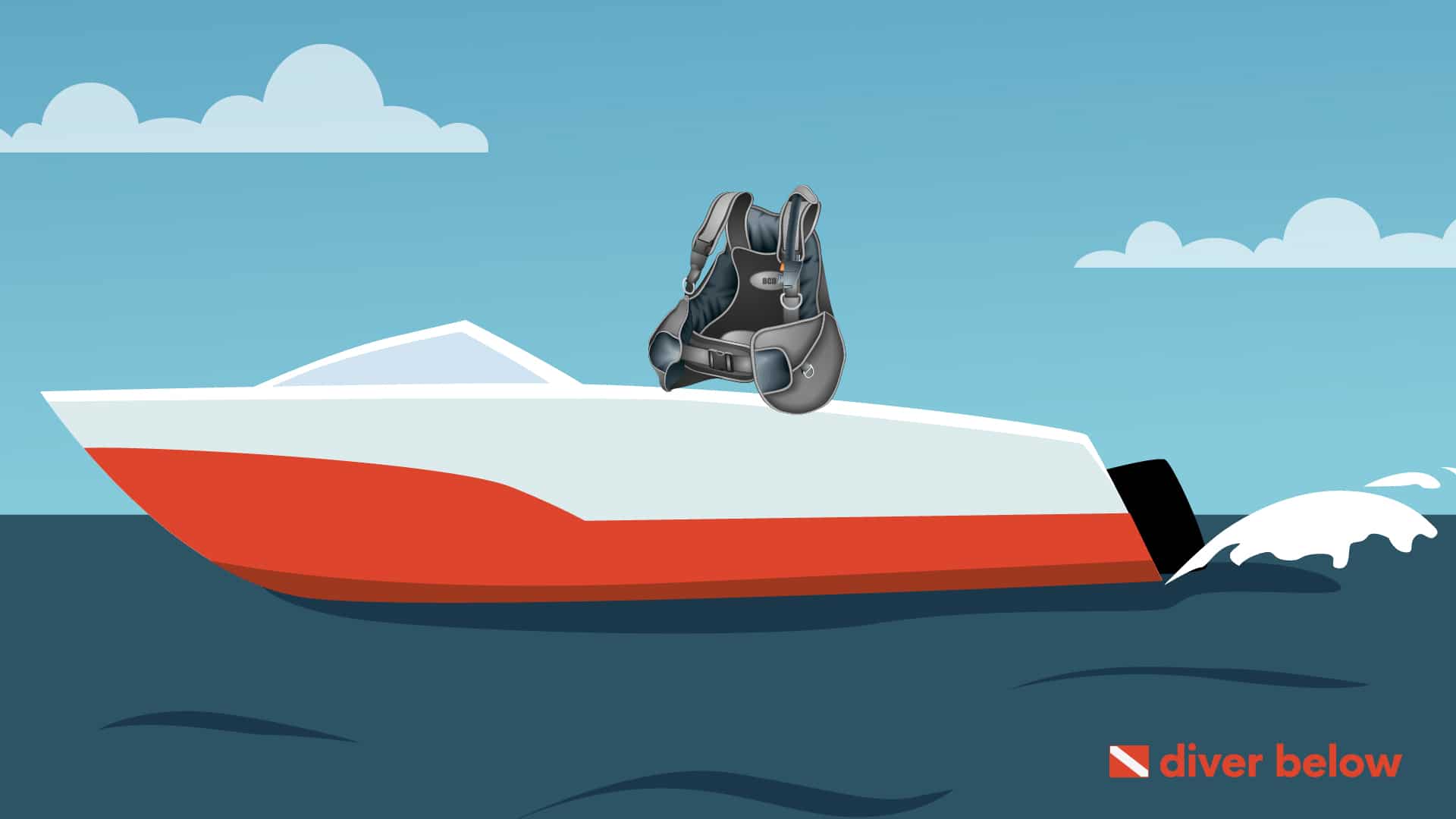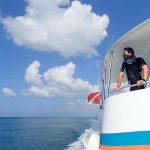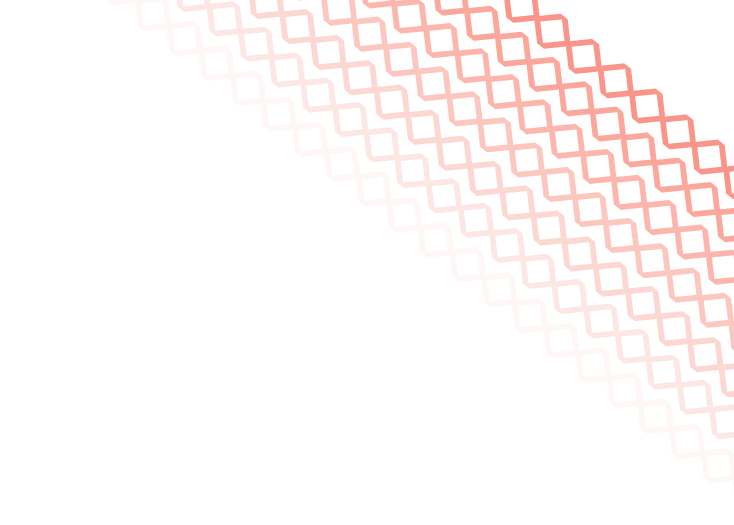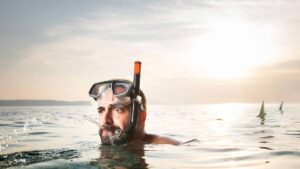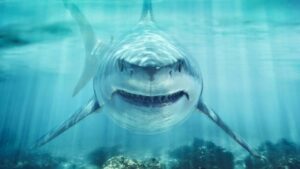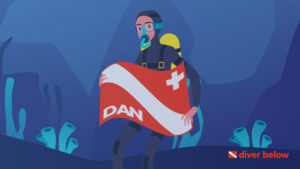Scuba divers control their buoyancy above and below the water thanks to Buoyancy Compensator Devices or BCDs.
It is one of the most important pieces of scuba equipment a diver wears.
In this article, we break down the role and purpose of a BCD for scuba divers, the different styles of BCDs, and the popular features of the equipment.
We’ll also highlight several high-quality brands you can purchase a BCD from and teach you the proper way to size a BCD should you wish to buy your own.
Contents
What Is a BCD in Scuba Diving?
A BCD is essentially a large bladder that fills with air from a diver’s air tank.
Along with weights, the adjustable BCD allows the diver to maintain their position in the water without having to physically compensate to stay where they want to be.
The human body is naturally buoyant, more or less so according to muscle versus fat content an individual may have.
Weights are added to a scuba belt so divers can sink rather than expend energy to reach deeper levels.
The buoyancy device is adjustable throughout the dive to help balance those weights according to the depth and salinity of the water.
What Does the BCD Do?
The BCD has a simple function: to establish neutral buoyancy.
In other words, it allows the diver to inflate or deflate the device, allowing them to rise or sink further down in the water.
How Does a Buoyancy Compensator Work?
The buoyancy compensator works by inflating an air bladder from the scuba diver’s air tank according to need, typically to manage balance at a particular depth.
Over time, the tank becomes lighter as air is breathed, so the BCD needs to be adjusted occasionally.
There are different diving factors that affect how BCD diving works.
High salinity water is heavier than freshwater, so the adjustments vary according to which ocean, sea, or lake the diver is in.
Do You Need a BCD to Dive?
A scuba BCD is a mandatory piece of equipment that no diver should go without, especially if you’re a sport, hobby, or technical diver.
Although its primary function is to help divers maintain proper buoyancy, it is also important from a logistical perspective.
It keeps the air tank attached to the diver and helps secure other essential gear like gauges and octopus to the diver.
The only time a diver wouldn’t need a scuba BCD is if they were a commercial diver.
Commercial divers are typically tethered to the surface and don’t need to obtain neutral buoyancy on their own.
They typically have someone above water who controls their ascent and descent.
Types of BCDs
BCDs come in a diverse range of styles, the most popular of which is the jacket style.
There are also BCDs that back-inflate and hybrid-style BCDs.
The style you choose depends on your ideal comfort and fit, as well as your experience level and the type of diving you’re doing.
[gw_video url=”https://www.youtube.com/watch?v=2ySm-Zj6WHU”]
Back Inflate BCD
Back inflatable BCDs are great for technical divers and people who scuba dive as part of their job.
This style of BCD is designed so that the inflatable bladder, or air cell, sits on the diver’s back plate between their body and the cylinder.
They attach to the body with chest straps.
This positioning helps them keep their body horizontal while underwater and helps propel them forward.
They aren’t considered as intuitive to use as other types of BCDs, but they are generally smaller and less restrictive thanks to the minimal bulk on the chest and sides.
The distribution of air in a back-inflate BCD is more even than other styles of BCDs, and they use less air overall.
That being said, it does take some practice to effectively utilize a back-inflate BCD.
Many new or inexperienced divers can find this type of BCD keeps them face down in the water unless they learn how to properly kick and lean back to float upright.
Jacket BCD
Most scuba divers learn how to dive using a jacket style BCD.
If you rent scuba gear from a dive shop, this is likely the BCD you will encounter.
They are comparable to life jackets in their general design and functionality.
This style of BCD is sleeveless and wraps around the diver.
The jacket has a built-in air bladder that inflates in front, behind, and on the sides of the diver’s body.
They also come in men’s and women’s fits, making them popular with recreational divers looking for a specific and comfortable fit.
Jacket-style BCDs provide the most stability underwater or at the surface and help keep divers in a vertical position when floating at the surface.
They also have plenty of pockets and pouches for storage.
However, if they don’t fit correctly, they can cause divers to remain vertical underwater as well.
Many divers find this style of BCD a bit uncomfortable to wear, especially when fully inflated.
Choosing a proper design and fit can prevent discomfort, but vest or jacket style BCDs can still put a bit of pressure on the chest and torso of the user.
Jacket-style BCDs create more drag underwater than back-inflate BCDs due to their level of padding and wraparound design.
However, they are much easier to inflate.
Hybrid BCD
Hybrid BCDs inflate by the hips and belly of the wearer, providing comfortable buoyancy in either deep or shallow waters.
Hybrid devices are comfortable for casual scuba diving as a hobby or while on vacation, as they are more intuitive for casual swimming and observation.
When hovering in a prone horizontal position, the hybrid system is set under the chest or stomach, providing a natural sense of buoyancy which can be easily modified with deep or shallow breathing techniques.
It can almost feel like laying on a pillow during the dive.
Travel Style BCDs
Travel-style BCDs are a lightweight version of a traditional BCD.
They typically come with a travel sack for easy transport, making them perfect for people traveling or going on vacation.
They are also incredibly compact, which is an excellent option for divers who have a petite stature.
Popular Features of Most BCDs’
All BCDs have necessary features that control a diver’s buoyancy and orientation and keep the air tank attached to their bodies.
In addition to the style of inflation that we’ve discussed above, there are other features to take note of.
Air Bladder
The air bladder is the BCD’s main characteristic.
This is an inflatable pouch that can be inflated or deflated by the diver to help them ascend or descend deeper underwater.
Inflator Valve
To inflate or deflate the air bladder, a diver has to make use of the inflator valve.
Air enters and exits the air bladder through this valve.
Weight Pockets
Trim weight pockets are another popular feature in many BCDs.
These are small weight pockets on the shoulders, back, or tank bands that distribute weight to help adjust the diver’s swimming position.
Air Dump Valves
Air dump valves allow air to be expelled from the BCD while it is in use underwater.
This valve is generally located at the hip or backside and is the most common way to vent a BCD.
D Rings
D rings are d-shaped rings made of plastic or metal used to attach other diving accessories to the BCD.
These are typically located on the shoulder or chest in an easy-to-reach location and used to attach gauges like the submersible pressure gauge to their BCD.
Buoyancy System Control Components
There are 7 basic components to BCD diving.
Inflation Device
Also called the air bladder, this device can be located on the back, sides, or front of the BCD depending on the specific style.
It is arguably the most important part of the BCD as it helps them achieve neutral buoyancy above and below water.
Power Inflator and Oral Inflator
Both styles of inflators are designed to have air enter the diving BCD.
Power inflators are simple buttons that can be pressed to inflate or deflate the BCD’s air bladder.
The inflate button is usually located next to the air inlet while the oral inflator button vents air from the BCD via the mouthpiece.
Weight Belt or Weight Pockets
Weight pockets are designed to let divers control where extra weight is placed on their bodies to help with body orientation underwater.
In the event of an emergency, weight pockets can be released quickly to help the diver get to the surface faster.
Backplate
Backplates are simple pieces of hard plastic that sit on the back of the BCD between the air tank and the diver.
It provides structure but also provides something for the various straps and belts to attach to.
BCD Clips
These small clips are made of metal or plastic.
They are typically d-shaped and allow divers to secure necessary hoses and gauges to their suits.
Dump Valves
Each BCD has at least one dump valve, typically on or near the left shoulder or the base.
These are designed to ventilate air out of your BCD.
Pressure Relase Valve
The pressure release valve releases air from the BCD when the air bladder is overinflated.
Buying a BCD
Buying a BCD is a great investment if you’re getting serious about scuba diving and renting equipment has become a bit of a hassle.
How Much is a BCD for Diving?
As a major piece of scuba diving equipment, the initial upfront costs of purchasing a BCD can be intimidating at first glance.
You should expect a high-quality BCD to cost between $250-500 dollars.
Before you buy a BCD, consider how frequently you plan to dive and the type of diving you plan on undertaking.
If you are an infrequent diver, renting equipment might be more affordable.
Popular BCD Brands
- SCUBAPRO
- Aqua Lung
- Atomic Aquatics
- MARES
- Zeagle
Sizing a BCD
The size and fit of a BCD are incredibly important, not only for general comfort but also to ensure it works the way it is supposed to. BCD sizes are also pretty strict.
Before you pick a BCD size you need to know your weight.
If you plan to dive in salt water, you need a BCD that is approximately 8-10% of your body weight.
Freshwater diving requires a BCD that is 6-8% of your body weight.
BCDs should fit snugly against the body.
If you are a short or petite person, compact BCDs are the best option to ensure it stays firmly against your body.
Take advantage of dive shop measurements and online sellers’ sizing charts to help you appropriately size your BCD
Wrapping Up
BCDs are a critical piece of scuba diving equipment that every diver, regardless of experience or skill level, needs to have.
They are essential for safe diving and come in a variety of styles that are useful for different types of BCD diving.
